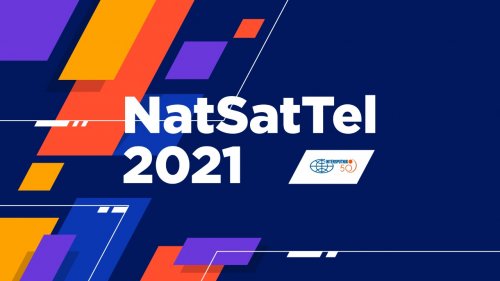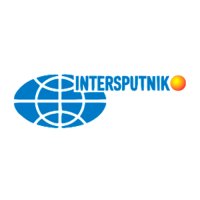In his welcoming address, the conference moderator, Andrey Kirillovich, Director of Strategy, Marketing and Business Development, Intersputnik, emphasized that the purpose of the conference is to identify and discuss the main trends in the development of the industry for the next decade.
This task is of vital importance for Intersputnik, since the Organization positions itself as an international player that consolidates commercial companies, government institutions, and public organizations to join and coordinate their efforts. The general goal is the deployment of unified ecosystem that accomplishes commercial, social and humanitarian projects. While opening the conference, Andrei Kirillovich also stressed that the UN Secretary General recently cited bridging the digital divide as one of the crucial tasks for civilization. Among other things, Intersputnik sees its mission in minimizing this digital inclusion gap, as evidenced by the consistent implementation of relevant projects, as well as by joining the Development Sector of the International Telecommunication Union and assisting national telecom authorities in deploying their own satellite networks.
Members and Signatories of Intersputnik operate more than thirty GEO satellites scattered along an orbital arc from 14W up to 183E. This combined orbital constellation provides an enviable resource for attaining the Organization’s most ambitious objectives.
In the years to come, Intersputnik intends to pursue the following avenues:
- promoting the peaceful exploration and use of outer space;
- contributing to the accomplishment of the UN Sustainable Development Goals, such as fighting the climate change and bridging the digital divide;
- developing services and applications for end users, which would employ both the satellite resource and terrestrial infrastructure of the Organization’s Member States and Signatories;
- joint communication and broadcasting satellites’ projects, which implies the shared use of the orbit and frequency resource in the interests of multiple Member Countries and Signatories of Intersputnik;
- creation of a multifunctional platform (marketplace) of combined services and applications in the field of satellite communications and broadcasting based on a distributed worldwide network of teleports, terrestrial infrastructure and multi-orbital solutions;
- migration towards a global virtual network operator business model in the framework of a unified virtualized hybrid network delivering cloud services and applications.
Market trends
All NATSATTEL 2021 speakers shared their opinions and views of the further development of the satellite communications market. It is vital to note that they considered satellite communications not as a standalone industry segment, but as part of an information and communication infrastructure within the context of other emerging services.
In general, the speakers expressed more or less the same evaluations: the satellite communications industry is facing a major transformation, which has already begun and will continue to accelerate.
With the advent of cloud services, ongoing total digitalization, gradual shift from video broadcasting to data transmission, emergence of NGSO systems, declining satellite capacity prices, satellite services integrating into 4G/5G terrestrial networks, the operators revise or diversify their business models, and build ecosystems. Intersputnik has started working on a multifunctional platform of universal solutions with a final goal to benefit from access to global infrastructure where virtual operator is the key player.
Video remains a strong business
Video services remain the industry’s most powerful money generator so far, yielding 52% of revenues. Pacôme Révillon, Chief Executive Officer of Euroconsult, predicts that by 2030, this segment, even though a bit decelerated, will still occupy a substantial market niche, which is estimated at $4 billion.
Andrey Kirillovich agrees with this forecast, as video remains a stable and strong market, but due to overwhelming migration of broadcasting services to online tools, Intersputnik has started developing satellite CDN solutions, i.e. online content delivery networks, a service aimed at OTT operators.
At the same time, the demand for data transfer keeps growing: in 2018 it amounted to 1.2 TB/s, in 2019 to 1.4 TB/s, in 2020 to 1.7 TB/s, and the consumption for 2021 is estimated at 2 TB/s.
Satellite broadband, the leading driving force
Although operators saw lower profits due to lower capacity prices over the past few years, the situation seems to have stabilized, Pacôme Révillon says. Moreover, Euroconsult voiced a heartening forecast, saying that doubling the volumes of leased satellite capacity between 2024 and 2030 would raise the profits by about 15-20%, with the growth ensured mainly by value-added services. That’s why their implementation underlies the operators’ profit boost. Besides, the launch of VHTS poses a risk that prices will continue to fall. Broadband, backhaul, mobility and cloud services will be the industry’s main drivers.
As of today, as many as 3.6 billion people are yet to be connected to the Internet. Of them, 700 million will most likely use satellite channels, and 45 million will directly use satellite broadband services. Euroconsult predicts that the number of satellite broadband users will skyrocket from 43 million in 2020 to 82 million in 2025, and up to 100 million in 2028.
Satellite and 5G
Aarti Holla-Maini, Secretary General of the European Satellite Operators’ Association (ESOA), sees standardization as the first and the foremost prerequisite for the satellite communications to be integrated into the global telecom. ESOA keeps actively promoting the satellite sector within 3GPP, with the 17th release scheduled for March 2022, where the satellite will be for the first time indicated as one of the technologies for terrestrial networks integration.
However, Leonid Konik, Chief Editor, ComNews Group, points out that, despite all efforts to propel satellite communications into the 5G ecosystem, the cellular operators themselves do not seem to be enthusiastic about it, to say the least. In its 17th release, 3GPP dedicated to the Non-Terrestrial Networks (NTNs) only 2 out of 20 work items. It is important to note that the NTNs are not only satellites, as they encompass high-altitude platform systems (HAPS) based on balloons, aircraft onboard air to ground networks (ATG) and unmanned aerial vehicles (UAV). Although 3GPP plans to add recommendations to engage satellite systems for expanding 5G networks, the relevant LTE Release 18 will not be published until as long as 2024.
Leonid Konik suggests that the satellite market players should concentrate their efforts on enterprises that need to control remote industrial assets, rather than on telecom carriers. The situation where industrial production facilities are remote from large cities is a global trend. And these private networks would be a great opportunity for satellite communications to advance into the 5G ecosystem using IoT services.
Jose Del Rosario, Consultant in Northern Sky Research (NSR), has highlighted the need for a new terrestrial infrastructure to streamline the development of new technologies, especially if satellite operators are serious in their intentions to develop cloud services. This will require flexible software-defined satellites, but the scope of their benefits will remain unleveraged without adequate terrestrial infrastructure and user terminals.
Space debris is a common problem
The number of space launches that has skyrocketed recently, with plethora of LEO systems filed to operate in the next decade, has spotlighted the need to address seriously the space debris issue. Aarti Holla-Maini says ESOA has prioritized encouraging international community to pay due attention to this problem, that has rapidly snowballed to unprecedented proportions. There is no time left, we have to take action immediately, says the head of ESOA.
Today, there are 34,000 objects more than 10 cm in size floating in outer space, of which only 4,000 are operational satellites. Furthermore, there are about 1 million objects larger than 1 cm and about 128 million debris less than 1 cm but more than 1 mm in size. Encountering these uncontrollable debris is fraught with danger for operating spacecrafts.
Given the situation, Mrs. Halla-Mainy believes that the applicable rules for regulating space activities have become obsolete. They have to be revised urgently. ESOA has already tackled this issue by releasing a brochure with guidelines for regulatory reform.
Like many other players on the space market, Intersputnik has a very serious concern about the debris problem. In the end of October 2021, Intersputnik was among the first satcom industry players to join the Space Industry Debris Statement, thus enabling the Organization to team up with the industry community to prevent the creation of new debris in orbit. Alongside Intersputnik, the initiative was widely endorsed by the leading players in the space sector: satellite operators, spacecraft manufacturers and investors.
Regional expertise
Azercosmos and Belintersat, two regional satellite operators, have acquired a unique experience in operating various business models: they leased bandwidth at 3-d parties’ satellites, operated proprietary satellites and in cooperation with other operators. What’s more, both Azercosmos and Belintersat focused their main activities outside their domestic countries and managed to gain expertise in the emerging markets, mainly in Africa. Their opinions on many issues may differ from those of the large players whose constellations cover most of the globe.
Are NGSO commercially viable on emerging markets?
Mark Guthrie, Chief Commercial Officer, Azercosmos, expects no demand for low-latency services in the African market for the next 3-5 years. Still, his advice to traditional telecom operators is to forge strategic alliances with NGSO operators, as he is confident such demand will emerge in the longer term.
Dmitry Zakaliukin, Deputy Satcom Development Director, Belintersat, agrees with Mark Guthrie that the demand for NGSO services in the African B2C market is a rather distant prospect. Apart from expensive end user terminals, this is complicated by underdeveloped technological solutions and lack of support. These services may only be of interest for enterprise customers.
Both speakers have agreed that the question of what is the best solution for an African country – to focus on LEO or GEO, leased or proprietary satellite – does not have a straight answer. The configuration of the satellite system depends on the geography, coverage, economy, mission and applications. The fact that new technologies keep evolving is not to be ignored either.
What is the attitude towards NGSO on the operator’s domestic market? Elshad Mammadov, Senior Sales Manager, Azercosmos, has told that negotiations were underway to allow OneWeb and Starlink to enter the Azerbaijani market, but the decision is still pending. Azercosmos also have plans on a proprietary LEO constellation in the future.
Satellites for the current decade
The space industry must keep up with the pace of the ever-changing global market. Nicolas Tenaud, Sales Director Russia and CIS, Thales Alenia Space, and Guy Limouzin, Director Governmental Sales, Airbus Defence and Space, have highlighted satellite flexibility as the market’s essential demand. Since operators may have to reconfigure their service offerings in a short period of time, what they need is a software-defined satellite.
At the moment, flexible GEO satellites with digital payload come at a higher price than traditional communication satellites, which urges space technology developers to find ways how to make them cheaper.
The situation with LEO satellites is slightly different. They are manufactured in volume, which makes them more or less affordable. The entire constellation costs much more than a single GEO satellite, of course.
The NATSATTEL 2021 conference brought together a diverse audience representing the space communications industry: commercial satellite operators and service providers, public organizations, regulators and consulting companies. That’s why every topic of the conference agenda was discussed from various angles. This represents a distinctive feature of the activities and style of work of Intersputnik, which unites under its roof various players of the space industry.
***
Russian version is available here
 Operations Committee
Operations Committee
